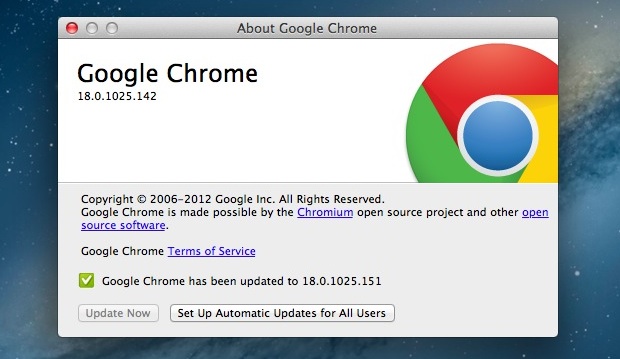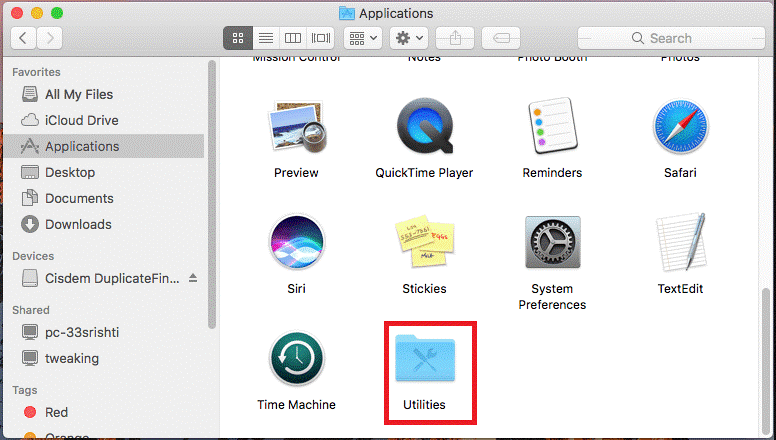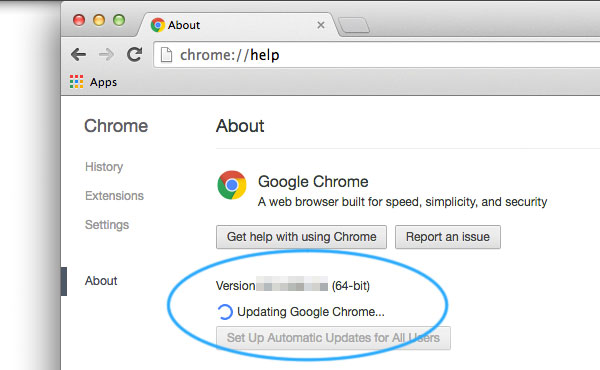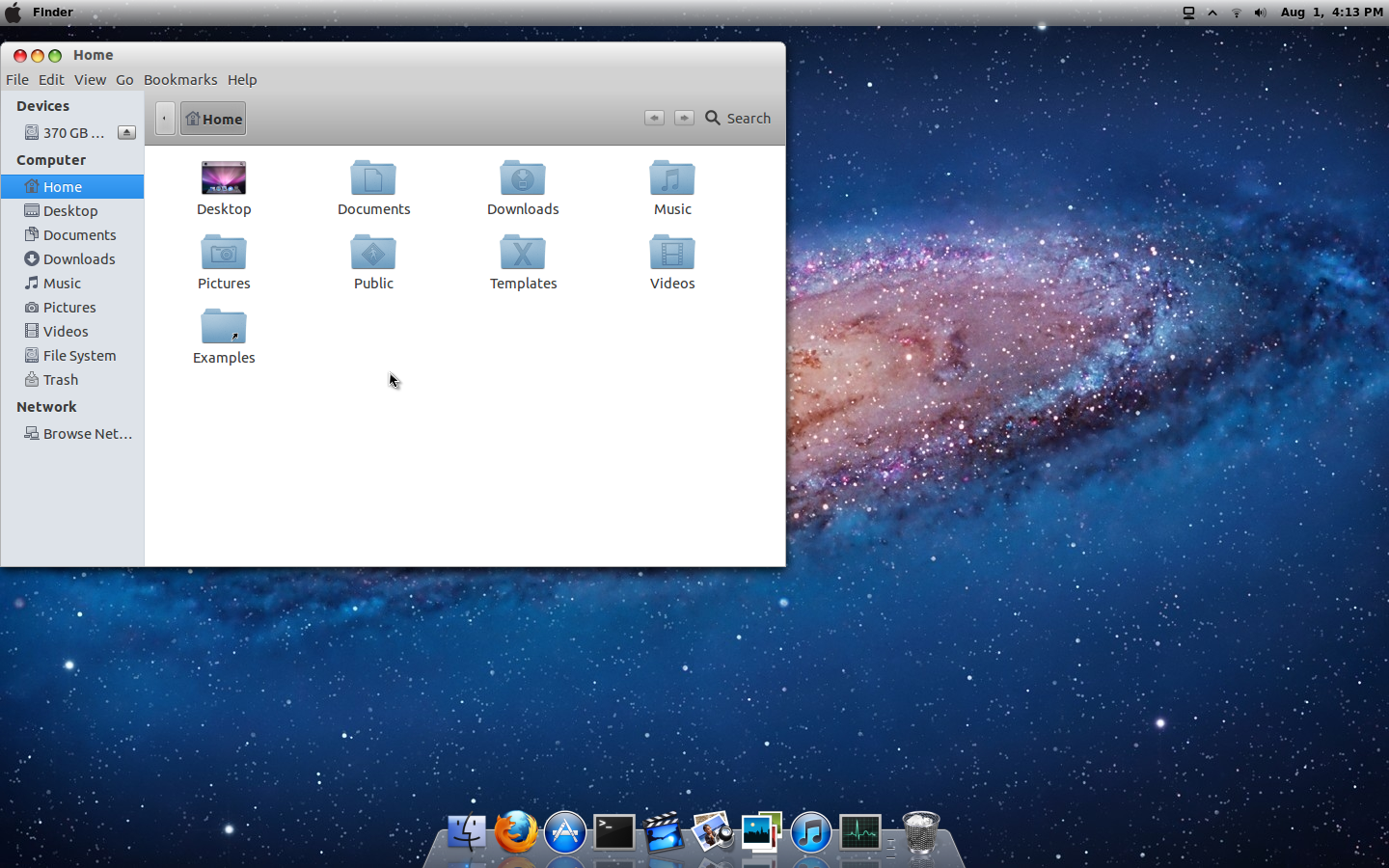- Luckily, it is quite easy to update Google Chrome on your Mac, PC, iPhones and Android, and here we will show you how to update it. Ways to upgrade Google Chrome on your PC or Mac. First, let's see the circumstantial on how updates works in Google Chrome. By default, Google Chrome is continuously ensuring for the up-to-date version of Google.
- Google Chrome on Windows and Mac auto-updates itself on a regular basis. The auto-updating procedure is performed by Google Update, which is based on the open-source Omaha project. Auto-updated provide fixes to sometimes critical issues, limiting exposure.
For Mac OS X 10.10 or later. This computer will no longer receive Google Chrome updates because Mac OS X 10.6 - 10.9 are no longer supported. This computer will no longer receive Google Chrome.
Also Read: 11 Best Google Chrome Extensions You Must Have. How to Stop Automatic Chrome Updates on Mac. In order to disable automatic Chrome updates in Mac all you need is ‘Terminal' application. Follow the below steps to do the same. Step 1: Navigate to ‘Finder' icon (the one which looks like a smiley face). Step 2: Locate Applications. Try Manual Update to Fix Failed to Start Error (Error code 3: 0x80080005) This is one of the.
How to get updates for macOS Mojave or later

If you've upgraded to macOS Mojave or later, follow these steps to keep it up to date:
- Choose System Preferences from the Apple menu , then click Software Update to check for updates.
- If any updates are available, click the Update Now button to install them. Or click 'More info' to see details about each update and select specific updates to install.
- When Software Update says that your Mac is up to date, the installed version of macOS and all of its apps are also up to date. That includes Safari, iTunes, Books, Messages, Mail, Calendar, Photos, and FaceTime.
Check For Updates Google Chrome Mac
To find updates for iMovie, Garageband, Pages, Numbers, Keynote, and other apps that were downloaded separately from the App Store, open the App Store on your Mac, then click the Updates tab.

Check For Google Chrome Updates Macbook Air
To automatically install macOS updates in the future, including apps that were downloaded separately from the App Store, select 'Automatically keep my Mac up to date.' Your Mac will notify you when updates require it to restart, so you can always choose to install those later.
How to get updates for earlier macOS versions
If you're using an earlier macOS, such as macOS High Sierra, Sierra, El Capitan, or earlier,* follow these steps to keep it up to date:
- Open the App Store app on your Mac.
- Click Updates in the App Store toolbar.
- Use the Update buttons to download and install any updates listed.
- When the App Store shows no more updates, the installed version of macOS and all of its apps are up to date. That includes Safari, iTunes, iBooks, Messages, Mail, Calendar, Photos, and FaceTime. Later versions may be available by upgrading your macOS.
To automatically download updates in the future, choose Apple menu > System Preferences, click App Store, then select 'Download newly available updates in the background.' Your Mac will notify you when updates are ready to install.
* If you're using OS X Lion or Snow Leopard, get OS X updates by choosing Apple menu > Software Update.
How to get updates for iOS
Learn how to update your iPhone, iPad, or iPod touch to the latest version of iOS.
Learn more
- Learn how to upgrade to the latest version of macOS.
- Find out which macOS your Mac is using.
- You can redownload apps that you previously downloaded from the App Store.
- Your Mac doesn't automatically download large updates when it's using a Personal Hotspot.
Chrome rolls out its automatic updates very frequently with the ambition of providing you with useful, comfortable and safe browsing experience. Sometimes, new updates either change too much stuff or take ages to download and install. Moreover, what can be irritating sometimes is that it starts to download the update without your permission which might hamper your productivity. Luckily, you can prevent automatic Chrome updates on both Windows and Mac.
In this article, we are going to talk about how to stop automatic Google Chrome update in Windows and Mac. So, here we go!
Google Chrome New Update Download
How to Stop Automatic Chrome Updates in Windows
It is the easiest and simplest way to stop automatic Google Chrome updates in Windows.
Step 1: Go to ‘Start' button and type run in the search programs and files field. You can also press Windows key + R to open Run window. Pirates 2005 movie torrent download.
Step 2: Type 'msconfig' in the Run prompt and hit ‘Ok'.

Step 3: Select ‘Services' tab from the System Configuration window.
Step 4: Search for Google Update Service (gupdate) and Google Update Service (gupdatem). You will find them under Google Inc or you can check ‘Hide all Microsoft services', which you will find on the bottom right corner of System Configuration window.
Step 5: Now, uncheck both Google items.
Step 6: Hit on ‘Ok' to continue.
Step 7: Now, your machine will prompt you to restart it to make the required changes.
Also Read: 11 Best Google Chrome Extensions You Must Have
How to Stop Automatic Chrome Updates on Mac
In order to disable automatic Chrome updates in Mac all you need is ‘Terminal' application. Follow the below steps to do the same.
Step 1: Navigate to ‘Finder' icon (the one which looks like a smiley face).
You can disable this feature by running single command in terminal ( open terminal via Ctrl+Alt+T):gsettings set org.gnome.shell.extensions.dash-to-dock extend-height falseHate Linux commands? Move Show Applications button to the left.You may also do some more configuration, e.g., moving the Application Menu button to the left.And this can be done via a single command in terminal:gsettings set org.gnome.shell.extensions.dash-to-dock show-apps-at-top trueOr open dconf editor, navigate to org/gnome/shell/extensions/dash-to-dock, and enable the key value of ‘show-apps-at-top'.4.

If you've upgraded to macOS Mojave or later, follow these steps to keep it up to date:
- Choose System Preferences from the Apple menu , then click Software Update to check for updates.
- If any updates are available, click the Update Now button to install them. Or click 'More info' to see details about each update and select specific updates to install.
- When Software Update says that your Mac is up to date, the installed version of macOS and all of its apps are also up to date. That includes Safari, iTunes, Books, Messages, Mail, Calendar, Photos, and FaceTime.
Check For Updates Google Chrome Mac
To find updates for iMovie, Garageband, Pages, Numbers, Keynote, and other apps that were downloaded separately from the App Store, open the App Store on your Mac, then click the Updates tab.
Check For Google Chrome Updates Macbook Air
To automatically install macOS updates in the future, including apps that were downloaded separately from the App Store, select 'Automatically keep my Mac up to date.' Your Mac will notify you when updates require it to restart, so you can always choose to install those later.
How to get updates for earlier macOS versions
If you're using an earlier macOS, such as macOS High Sierra, Sierra, El Capitan, or earlier,* follow these steps to keep it up to date:
- Open the App Store app on your Mac.
- Click Updates in the App Store toolbar.
- Use the Update buttons to download and install any updates listed.
- When the App Store shows no more updates, the installed version of macOS and all of its apps are up to date. That includes Safari, iTunes, iBooks, Messages, Mail, Calendar, Photos, and FaceTime. Later versions may be available by upgrading your macOS.
To automatically download updates in the future, choose Apple menu > System Preferences, click App Store, then select 'Download newly available updates in the background.' Your Mac will notify you when updates are ready to install.
* If you're using OS X Lion or Snow Leopard, get OS X updates by choosing Apple menu > Software Update.
How to get updates for iOS
Learn how to update your iPhone, iPad, or iPod touch to the latest version of iOS.
Learn more
- Learn how to upgrade to the latest version of macOS.
- Find out which macOS your Mac is using.
- You can redownload apps that you previously downloaded from the App Store.
- Your Mac doesn't automatically download large updates when it's using a Personal Hotspot.
Chrome rolls out its automatic updates very frequently with the ambition of providing you with useful, comfortable and safe browsing experience. Sometimes, new updates either change too much stuff or take ages to download and install. Moreover, what can be irritating sometimes is that it starts to download the update without your permission which might hamper your productivity. Luckily, you can prevent automatic Chrome updates on both Windows and Mac.
In this article, we are going to talk about how to stop automatic Google Chrome update in Windows and Mac. So, here we go!
Google Chrome New Update Download
How to Stop Automatic Chrome Updates in Windows
It is the easiest and simplest way to stop automatic Google Chrome updates in Windows.
Step 1: Go to ‘Start' button and type run in the search programs and files field. You can also press Windows key + R to open Run window. Pirates 2005 movie torrent download.
Step 2: Type 'msconfig' in the Run prompt and hit ‘Ok'.
Step 3: Select ‘Services' tab from the System Configuration window.
Step 4: Search for Google Update Service (gupdate) and Google Update Service (gupdatem). You will find them under Google Inc or you can check ‘Hide all Microsoft services', which you will find on the bottom right corner of System Configuration window.
Step 5: Now, uncheck both Google items.
Step 6: Hit on ‘Ok' to continue.
Step 7: Now, your machine will prompt you to restart it to make the required changes.
Also Read: 11 Best Google Chrome Extensions You Must Have
How to Stop Automatic Chrome Updates on Mac
In order to disable automatic Chrome updates in Mac all you need is ‘Terminal' application. Follow the below steps to do the same.
Step 1: Navigate to ‘Finder' icon (the one which looks like a smiley face).
You can disable this feature by running single command in terminal ( open terminal via Ctrl+Alt+T):gsettings set org.gnome.shell.extensions.dash-to-dock extend-height falseHate Linux commands? Move Show Applications button to the left.You may also do some more configuration, e.g., moving the Application Menu button to the left.And this can be done via a single command in terminal:gsettings set org.gnome.shell.extensions.dash-to-dock show-apps-at-top trueOr open dconf editor, navigate to org/gnome/shell/extensions/dash-to-dock, and enable the key value of ‘show-apps-at-top'.4. You can do this by a graphical tool called dconf editor (Install it in Ubuntu Software)In dconf editor, navigate to org/gnome/shell/extensions/dash-to-dock, then scroll down and disable the key value of ‘ extend-height‘3.
Step 2: Locate Applications.
Step 3: Go to ‘Utilities' folder and open the ‘Terminal'.
Note: You can also press Command + Shift + U to open Utilities folder.
Step 4: Now, enter the below command
defaults write com.google.Keystone.Agent checkInterval 0
Then, press Return key from your keyboard to disable automatic updates for Google products.
Step 5: You need to restart your Chrome in case it's opened to apply the new changes.
Step 6: That's it, it is done. After making the required changes your Chrome will no longer check for automatic updates.
Also Read: 11 Lesser Known Google URL That Everyone Should Know
Note: You can easily enable automatic updates by accessing Terminal by using the same command. You can replace 0 with the interval between update checks in seconds. In fact, you can set checkInterval 86400, if you want to check for updates in every twenty-four hours. It is possible to check updates by opening the Chrome menu < choosing ‘Help' < ‘About Google Chrome'.
Overall, it is not recommended by Google to disable Chrome automatic updates. Moreover, it also fixes security holes and minor bugs. However, it is the best possible way to preserve your internet data and save you from the annoying notification to install the updates.
0 Responses
